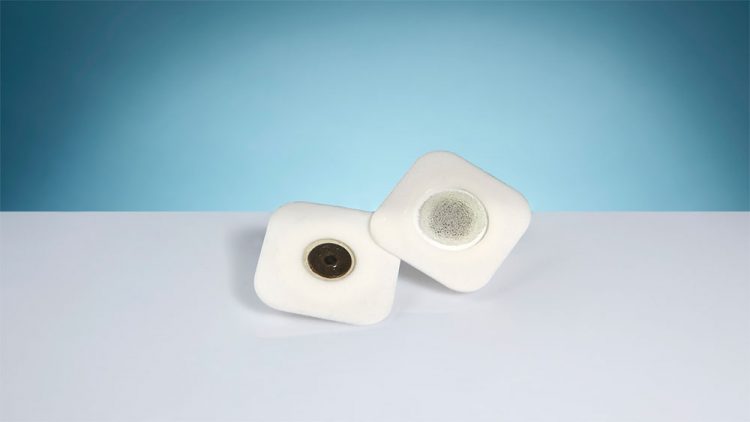
WHAT A DISPOSABLE ECG ELECTRODE LOOKS LIKE
HOW AN ECG ELECTRODE IS MADE.
Disposable ECG electrodes are commonly used to detect bioelectrical signals; the most common ones on the market for resting and stress testing consist of a number of high-tech components that are highly relevant to the final result:
– an electrolyte gel that enables signal stabilization and transmission. The gel can be either liquid or solid, the latter tending to be stickier and also have adhesive properties. Solid eliminates the drawbacks of liquid gel (reacts better to sweat, dries out later and less) while still offering low impedance. For long monitoring, solid gel is often used in contrast for short monitoring, liquid gel is used.
– the transducer element of the “tablet” signal: it must necessarily be made of Ag/AgCl in order to ensure compliance with regulations regarding recovery time after defibrillation and to still guarantee signal quality throughout the duration of ECG recording
– the adhesive part of the electrode must not only have adhesive power but also be hypoallergenic. It is important to avoid the presence of solvents, as these can cause both skin irritation and reduced adhesiveness of the electrode.
– the substrate should be permeable to bodily fluids (e.g., sweat) e.g., a good foam (polyethylene foam) than other “special” substrates of dubious origin is definitely better.
– the protective capsule maintains the conductive properties of the gel and prevents it from drying out, contamination and the growth of mold and bacteria
– the attachment is often of poor quality as much as metal as shape and is the most critical point, since that is where much of the noise that makes the ECG signal unreadable originates
– the primary packaging the best are those in plasticized aluminum film. The importance of packaging should not be underestimated as the pouch must be able to facilitate sealing to prevent dehydration of the electrode
– labeling and instructions the labels on the packaging must include all information to ensure identification and traceability from the device. Instructions for use, date of manufacture, and expiration date for both the unopened package and the opened package must be present on the packaging. Also check for indications regarding disposal method.
LUMED offers 4 different types of electrodes to meet market demands for any type of diagnostic examination or monitoring. The price of these devices and the quality of each of the construction elements described above, determines a “value for money” among the highest on the market.
But where do you place the electrodes? No problem we explain it to you!!!



